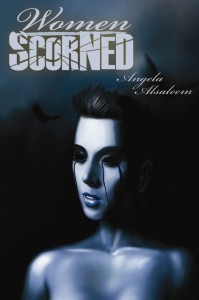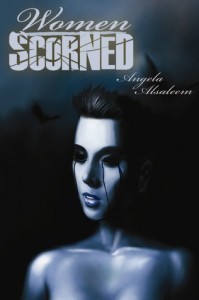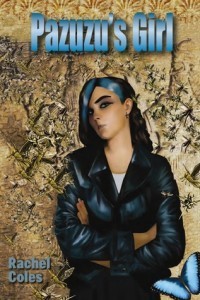Christopher C. Payne's Blog, page 11
March 4, 2012
Writing Tips – Consistency
We have covered four important topics in our discussions about the art of being published; Editing, Criticism, the author's Willingness to act upon suggestions, and most recently, Surprises. A fair amount of territory to cover, to be sure. Consistency is our next topic, and it is a problem that can plague good writers—by hiding through their every read.
Small, and big flaws in narrative consistency can hide through several of the author's most careful reviews. For this reason, we urge that every narrative get a good viewing by a second, and even a third reader, who are not in the book to line edit. (We, honestly, do not recommend more than one line-editor for a book. That might create consistency problems…)
In the broadest terms, this topic is about balance—the correct balance of themes. Scary books should remain pleasantly frightening. Humorous books won't hold the reader if they turn sour. Romance requires a near perfect balance of Drama, Sci-Fi seems to love being paired with Adventure and even Horror themes. Done well, those themes will not collide, or tip the book too far in the wrong direction. Authors, and line-editors, can sometimes be too close to the text to see when the narrative is out of balance.
Readers don't usually overlook such things, because they are not working when they read. Quite often, we hear about some hopeful book that had a good beginning, but a lackluster ending. Or, a Sci-Fi so overloaded with Romance that both camps found fault with it. An out-of-balance book is not usually criticized for having too much of some theme. The usual complaint will be that the book lacked enough of some other element. A good beta reader—with no other task to perform beyond enjoying the story—will spot most broad consistency problems in any narrative.
What about the small consistency errors? Those are the ones, sometimes, so tiny that the best line-editor will struggle to capture them. Those will be typos, often; the author repeatedly refers to 1934, but typed 1943, once, instead; a character's name is misspelled a single time; an article of clothing changes color; a pen becomes a pencil; an open window is opened again; a closed door is shut… Or, those same types of flaws appear in the complex structure of the story; a character with a distinctive dialect fails to use that speech pattern every time they speak; an intimately described house or building is inexplicably altered in layout… It's even possible to have a character leave their auto somewhere to go riding with a friend, then appear in their own car again, without having them return to get it. Just as the mealy little typos tend to hide from every reader in the book—the terrible, plot-crashing flaws can hide—because the text around them is so brief. Just make a character turn the wrong way down an often-used hallway in a grand house, and it might be overlooked for a great while.
The film industry hires highly paid technicians for every movie project, called continuity editors, or script supervisors. They really do study every new camera setup, to make sure the audience never sees the clock-bogging gaps between moments of a film. However, there are some wonderful, infamous, moments in the brilliant Peter Jackson film, Lord of the Rings: Fellowship of the Rings. Gandalf has just pulled Sam through Frodo's window, and is holding him down on the parlor table, to scare him. In repeated cuts back to Sam's terrified expression—the books scattered about on the floor appear and disappear. Readers are as astute as moviegoers are. The author then must use the very same diligence to uncover all the little gaps in what they have written. This does take upfront planning, to ease the burden of back-end work.
Some authors never write without an outline. No one should, really. Some authors go so far as to create bios or family trees for their characters, timelines for the plot, and spreadsheets for the facts, diagrams and maps for the settings. For years (before technology), authors were some of the best researchers on the planet. Now, with so many wizardly online tools at our fingertips, it isn't necessary to travel to a distant land before writing about it. It is easier to write to great detail, without much effort in research. But, no author should approach their novel with a complete lack of any tools. At the least, that would put a terrible strain on the line-editor, who should be praising the author for the job well done. At the worst, the book won't make it to print.
Consistency problems do not always appear as we have described, waiting for a few edits to smooth them out. Some defy light editing. Some require a lot of work to repair. Readers get into a rhythm with the book they are reading. Just as we all enjoy certain types of music, and not others, we 'listen' to the narrative in books much the same way. For that reason, the design of the book needs to be balanced, from the cover, inward. It might surprise you to learn that publishers understand this, and will even design on which page—odd or even— a book's chapters end and begin. The look and feel of the book is tremendously important.
Chapter length, also, really matters and readers may lose their desired rhythm if they are confronted by a wildly varying chapter structure. The narrative should be balanced in such a way that readers are not forced to tag along through suddenly tedious pages, only because the author decided to demonstrate their ability to write details. Or, the opposite; writing in a single sentence chapter, for dramatic effect. Rather than enhancing the reader's experience, such structure elements may only draw attention to themselves.
Character development is another area that may defy simple editing techniques. There are countless books—bestsellers, even—with great lead characters… and wooden, two-dimensional supporting characters, because the author chose to describe them in uneven terms. This does not imply each character must be given an exact number of paragraphs to introduce them. We are urging attention to narrative balance, not narrative rigidity. Authors should apply their best efforts to describing settings, characters, speech, emotions, and actions with as much consistency as they are able.
Put in the simplest terms, consistency is: what you begin with, you conclude with.
Whether a story is lopsided, because of poorly stacked elements, or has a character removing boots that only a page before were trainers, consistency can be a book-crashing problem, and a serious chore to locate and eliminate. As close as their nose will always be to the text…we will always hold this opinion—the author is seldom the right person for that important job. The author needs the extra help of beta readers, to discover those problems, before the public gets a chance to point them out in a review.


Women Scorned
By: Angela Alsaleem
ISBN: 9781936564385
Expected Publication: April 13, 2012 by JournalStone
Available Format: Hardcover, Paperback, ebook
My Rating: ★★★★★
The publisher includes this disclaimer in its synopsis: This book is intended for adults and contains extreme violence, torture and graphic murder scenes. You have been forewarned. For some, this just serves to pique your curiosity even further, but if any of those things bother you, do NOT take this warning lightly because it is very, very true!
Camilla has been brutally murdered and left on the side of the road when a mysterious, shadowy figure emerges and touches her bloody, lifeless body. Suddenly, Camilla is 'alive' again with a taste for revenge, not just for herself, but for all those women who have been mistreated, abused, murdered in much the same ways. Camilla is both tortured and propelled by her nightmarish visions as she seeks out her victims one at a time. The spirit that possesses her is also being sought out—by a dark cult bent on intertwining the living world with the evils of the spirit world. Thrust in the middle of it all is Libitina, a struggling pathology student with a bit of a disconcerting side of her own. She may be the only thing standing in the way of the cult and the demon horde waiting just on the other side of the doorway to our world.
Women Scorned is probably not something I would have picked up had I not proofread it for JournalStone. But, I have to say, despite it being terribly disturbing, it is a fantastic horror novel. The horrors of this story aren't necessarily the things that go bump in the night. I'm talking about a walking dead, badass woman seeking big time revenge kind of scary… Creepy, woman-child with a taste for torture kind of scary.
There are some truly twisted characters involved in this book, from the possessed murder victim, Camilla, to the green-eyed witch bent on instructing others of the 'pleasures of pain', to the evil behind it all. So many instances in the story I was completely grossed out, gasping, literally covering my mouth with my hand—but at the same time, I was drawn right in, sitting on the edge of my seat waiting to find out what happens next, how it all ties together, and if the characters will get what is coming to them in the end. And that is not a guarantee…
What is guaranteed is that you are going to find yourself cringing, but you will connect with so many of the characters, maybe even when you think you shouldn't. There is a real story beneath it all, and all the disjointedness in the beginning, switching between seemingly unrelated points of view, will come together in a big way. Once you get sucked in, you'll find you just can't put it down.


February 24, 2012
Women Scorned
By: Angela Alsaleem
ISBN: 9781936564385
Expected Publication: April 13, 2012 by JournalStone
Available Format: Hardcover, Paperback, ebook
My Rating: ★★★★★
The publisher includes this disclaimer in its synopsis: This book is intended for adults and contains extreme violence, torture and graphic murder scenes. You have been forewarned. For some, this just serves to pique your curiosity even further, but if any of those things bother you, do NOT take this warning lightly because it is very, very true!
Camilla has been brutally murdered and left on the side of the road when a mysterious, shadowy figure emerges and touches her bloody, lifeless body. Suddenly, Camilla is 'alive' again with a taste for revenge, not just for herself, but for all those women who have been mistreated, abused, murdered in much the same ways. Camilla is both tortured and propelled by her nightmarish visions as she seeks out her victims one at a time. The spirit that possesses her is also being sought out—by a dark cult bent on intertwining the living world with the evils of the spirit world. Thrust in the middle of it all is Libitina, a struggling pathology student with a bit of a disconcerting side of her own. She may be the only thing standing in the way of the cult and the demon horde waiting just on the other side of the doorway to our world.
Women Scorned is probably not something I would have picked up had I not proofread it for JournalStone. But, I have to say, despite it being terribly disturbing, it is a fantastic horror novel. The horrors of this story aren't necessarily the things that go bump in the night. I'm talking about a walking dead, badass woman seeking big time revenge kind of scary… Creepy, woman-child with a taste for torture kind of scary.
There are some truly twisted characters involved in this book, from the possessed murder victim, Camilla, to the green-eyed witch bent on instructing others of the 'pleasures of pain', to the evil behind it all. So many instances in the story I was completely grossed out, gasping, literally covering my mouth with my hand—but at the same time, I was drawn right in, sitting on the edge of my seat waiting to find out what happens next, how it all ties together, and if the characters will get what is coming to them in the end. And that is not a guarantee…
What is guaranteed is that you are going to find yourself cringing, but you will connect with so many of the characters, maybe even when you think you shouldn't. There is a real story beneath it all, and all the disjointedness in the beginning, switching between seemingly unrelated points of view, will come together in a big way. Once you get sucked in, you'll find you just can't put it down.


February 18, 2012
HWA 2011 Stoker Nominations
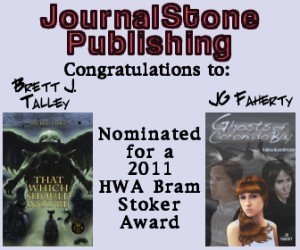 I would like to be the first to congratulate JG Faherty (Greg) and Brett J. Talley on being nominated for a 2011 HWA Bram Stoker Award.
I would like to be the first to congratulate JG Faherty (Greg) and Brett J. Talley on being nominated for a 2011 HWA Bram Stoker Award.
Greg was nominated in the Young Adult category and Brett was nominated in the First Novel Category.
This is a wonderful accomplishment and an amazing achievement for both of these authors and for JournalStone Publishing. We are lucky to work with such talented people and wish them both the best of luck in the final round.
JournalStone is honored that our first year of publishing has attained such lofty results. We never imagined that two of our authors would attain this level of recognition in such a short amount of time.
We want to thank the HWA, our staff and all of our authors and we wish Greg and Brett the best of luck in the final ballot to be announced March 31, 2012.
Complete list of nominees:
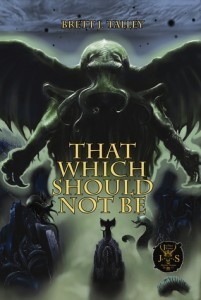 This year's nominees in each category are:
This year's nominees in each category are:
SUPERIOR ACHIEVEMENT IN A NOVEL A Matrix Of Angels by Christopher Conlon (Creative Guy Publishing) Cosmic Forces by Greg Lamberson (Medallion Press) Floating Staircase by Ronald Malfi (Medallion Press / Thunderstorm Books) Flesh Eaters by Joe McKinney (Pinnacle Books) Not Fade Away by Gene O'Neill (Bad Moon Books) The German by Lee Thomas (Lethe Press)
SUPERIOR ACHIEVEMENT IN A FIRST NOVEL Isis Unbound by Allyson Bird (Dark Regions Press) Southern Gods by John Hornor Jacobs (Night Shade Books) The Lamplighters by Frazer Lee (Samhain Horror) The Panama Laugh by Thomas Roche (Night Shade Books) That Which Should Not Be by Brett J. Talley (JournalStone)
SUPERIOR ACHIEVEMENT IN A YOUNG ADULT NOVEL Ghosts of Coronado Bay, A Maya Blair Mystery by J. G. Faherty (JournalStone) The Screaming Season by Nancy Holder (Razorbill) Rotters by Daniel Kraus (Delacorte Books for Young Readers) Dust and Decay by Jonathan Maberry (Simon & Schuster Books for Young Readers) A Monster Calls by Patrick Ness (Candlewick / Walker) This Dark Endeavor: The Apprenticeship of Victor Frankenstein by Kenneth Oppel (Simon & Schuster / David Fickling Books)
SUPERIOR ACHIEVEMENT IN A GRAPHIC NOVEL Anya's Ghost by Vera Brosgol (First Second) Locke & Key Volume 4 by Joe Hill (IDW Publishing) Green River Killer by Jeff Jensen (Dark Horse) Marvel Universe vs. Wolverine by Jonathan Maberry (Marvel) Baltimore Volume I: The Plague Ships by Mike Mignola and Christopher Golden (Dark Horse) Neonomicon by Alan Moore (Avatar Press)
SUPERIOR ACHIEVEMENT IN LONG FICTION 7 Brains by Michael Louis Calvillo (Burning Effigy Press) "Roots and All" by Brian Hodge (A Book of Horrors) "The Colliers' Venus (1893)" by Caitlin R. Kiernan (Naked City: New Tales of Urban Fantasy) Ursa Major by John R. Little (Bad Moon Books) Rusting Chickens by Gene O'Neill (Dark Regions Press) "The Ballad of Ballard and Sandrine" by Peter Straub (Conjunctions: 56)
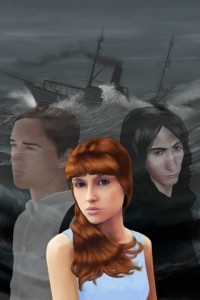 SUPERIOR ACHIEVEMENT IN SHORT FICTION "Her Husband's Hands" by Adam-Troy Castro (Lightspeed Magazine, October 2011) "Herman Wouk Is Still Alive" by Stephen King (The Atlantic Magazine, May 2011) "Graffiti Sonata" by Gene O'Neill (Dark Discoveries #18) "X is for Xyx" by John Palisano (M is for Monster) "Home" by George Saunders (The New Yorker Magazine, June 13, 2011) "All You Can Do Is Breathe" by Kaaron Warren (Blood and Other Cravings)
SUPERIOR ACHIEVEMENT IN SHORT FICTION "Her Husband's Hands" by Adam-Troy Castro (Lightspeed Magazine, October 2011) "Herman Wouk Is Still Alive" by Stephen King (The Atlantic Magazine, May 2011) "Graffiti Sonata" by Gene O'Neill (Dark Discoveries #18) "X is for Xyx" by John Palisano (M is for Monster) "Home" by George Saunders (The New Yorker Magazine, June 13, 2011) "All You Can Do Is Breathe" by Kaaron Warren (Blood and Other Cravings)
SUPERIOR ACHIEVEMENT IN A SCREENPLAY True Blood, episode #44: "Spellbound" by Alan Ball (HBO) The Walking Dead, episode #13: "Pretty Much Dead Already" by Scott M. Gimple (AMC) The Walking Dead, episode #9: "Save the Last One" by Scott M. Gimple (AMC) Priest by Cory Goodman (Screen Gems) The Adjustment Bureau by George Nolfi (Universal Pictures) American Horror Story, episode #12: "Afterbirth" by Jessica Sharzer (20th Century Fox Television)
SUPERIOR ACHIEVEMENT IN A FICTION COLLECTION Voices: Tales of Horror by Lawrence C. Connolly (Fantasist Enterprises) Red Gloves by Christopher Fowler (PS Publishing) Two Worlds and In Between: The Best of Caitlin R. Kiernan (Volume One) by Caitlin R. Kiernan (Subterranean) Monsters of L.A. by Lisa Morton (Bad Moon Books) The Corn Maiden and Other Nightmares by Joyce Carol Oates (Mysterious Press) Multiplex Fandango by Weston Ochse (Dark Regions Press)
SUPERIOR ACHIEVEMENT IN AN ANTHOLOGY (EDITING) NEHW Presents: Epitaphs edited by Tracy L. Carbone (NEHW) Ghosts By Gaslight edited by Jack Dann and Nick Gevers (Harper Voyager) Blood And Other Cravings edited by Ellen Datlow (Tor Books) Supernatural Noir edited by Ellen Datlow (Dark Horse) Tattered Souls 2 edited by Frank J. Hutton (Cutting Block Press) Demons: Encounters with the Devil and his Minions, Fallen Angels and the Possessed edited by John Skipp (Black Dog and Leventhal)
SUPERIOR ACHIEVEMENT IN NON-FICTION Halloween Nation: Behind the Scenes of America's Fright Night by Lesley Pratt Bannatyne (Pelican Publishing) Reflections in a Glass Darkly: Essays on J. Sheridan Le Fanu edited by Gary William Crawford, Jim Rockhill and Brian J. Showers (Hippocampus Press) Starve Better by Nick Mamatas (Apex Publications) Everything You Ever Wanted to Know About Zombies by Matt Mogk (Gallery Books) The Gothic Imagination by John C. Tibbetts (Palgrave Macmillan) Stephen King: A Literary Companion by Rocky Wood (McFarland & Company, Inc., Publishers)
SUPERIOR ACHIEVEMENT IN A POETRY COLLECTION How to Recognize a Demon Has Become Your Friend by Linda Addison (Necon Ebooks) At Louche Ends: Poetry for the Decadent, the Damned & the Absinthe-Minded by Maria Alexander (Burning Effigy Press) Surrealities by Bruce Boston (Dark Regions Press) Shroud of Night by G. O. Clark (Dark Regions Press) The Mad Hattery by Marge Simon (Elektrik Milk Bath Press) Unearthly Delights by Marge Simon (Sam's Dot)


February 4, 2012
Writing Tips – Surprises
In our continuing discussions about the art of being published, we have covered editing, criticism, and the author's willingness to act upon suggestions. It's time to move on to a narrative element that never fails to produce good results; surprises.
There are two sorts of surprises—those readers expect, and the text that stuns the reader with its cleverness. Either of the two will do, but at least one of the two is vital to your story hooking its reader and holding them.
In our last post, we alluded to a recent, viral best-seller, which said that vampires sparkle. Without mentioning the name of the book, you know it. The surprise element itself has taken on a life of its own, and propelled the book series into the stratosphere. It has been said that there aren't any new elements in horror to write. Well, that author certainly found one. The best quality about it was that, it was clever and subtle. Only a small thing we had never been told about such creatures before and it stunned readers.
We are earnestly looking in our regular submissions for just such a gem. Every publishing house is looking earnestly for the same thing. Not every author will produce that magical note, but each author has that potential, if they continue to play at their creation with such a note in mind.
When is the best time to reveal this element? Retail Marketing has been reducing that answer down to a specific formula. The first sentence. But, we are in a new generation of publishing, and it is time to admit that readers are more patient than that formula suggests. They will not wait several chapters, however. The first few pages of a narrative, certainly, must at least hint at the surprises to come. The marketing blurb for the book, absolutely must let the reader know there is something unique about the story. Once it is firmly established in the reader's mind that the story is special and entertaining, they will be patient and continue reading.
Readers have always rushed to books that appeared with a surprise as we have just described. What of the writer who writes in a series of books? How do they continue to please their readers? Their narrative must have a surprise element that brings out an entirely new thought; a new character quirk; a setting never visited; a foe never imagined. Writers who write in very familiar genres face this challenge with every page. Most imagine that the best surprise is a clever plot twist. We would suggest that it is not, because plot twists fall into the category of surprises which readers expect. Readers are always deeply satisfied by the 'gotcha' style of plot twist, but they crave the surprising surprise.
Can Science Fiction writers surprise us anymore? Hasn't the genre been written to death by now? Obviously not. It is a genre which continues to thrive because of surprises, and yes, they are becoming more subtle with each generation because the grander themes have been expressed. It may be true, Sci-Fi writers face much larger challenges to surprise the reader now than any other genre. But, Sci-Fi is learning, as Horror writers learned long ago, the story can honor every familiar element in the genre and readers will appreciate that. Tell them those familiar things in a surprising way, and the book will receive praise reviews.
Readers have been pleading with authors, for years, "Tell us something new. Take us somewhere different. Make us feel something we did not expect to feel." So, publishers devote vast energies to finding those special books and putting them into print.
Have we ever found one? Yes, indeed we have. We recently awarded author Brett J. Talley for his book That Which Should Not Be. The entire book is a surprise. It is receiving rave reviews for the beautiful way it honors the best elements of cherished Horror fiction. There are 'gotcha' moments within the text, and there are new ways to be frightened. Brett mastered the entire spectrum of surprising his reader, and they are blessing him for it.
We had the pleasure of surprising him, with his Grand Prize.


January 25, 2012
Pazuzu’s Girl
By: Rachel Coles
ISBN: 9781936564361
Expected Publication: February 10, 2012 by JournalStone
Available format: Hardcover, paperback, ebook
My Rating: ★★★★★
Publisher’s Synopsis: Morpho Wilson thought her life was difficult enough. Her father is Pazuzu, the Mesopotamian demon of plague and the Southwest wind. As a teenager Morpho struggles against her father, while trying to adjust to high school in a new neighborhood. The family is constantly moving in an attempt to elude Pazuzu’s murderous ex-wife, a demoness known for killing children.
Then something unique happens. A socially-impaired classmate becomes so intrigued by Morpho that he pursues her, despite the mystery surrounding her family and the danger that accompanies it.
But before their romance can grow the demoness tracks Morpho down, and now only needs an ancient artifact called the Tablet of Destiny to complete the destruction of the world. The tablet confers on its owner the ability to control the fate of everything and everyone on earth.
Once the tablet is discovered in the Middle East, the oldest and most powerful gods begin a battle for its possession, with the human population caught in the middle. Morpho, her family, and her new friend must decide, do they escape from the horrifying demoness or fight for their own destiny. How far will Pazuzu go to save his daughter from a hellish fate? Will his banishment from Heaven so many millennia ago end up being a curse…or a blessing?
I love working with JournalStone because I have been fortunate enough to get an early look at so many amazing novels. Pazuzu’s Girl is definitely in those ranks! It has such an interesting, unique plot and is so well written. I continue to be impressed by the caliber of writers who are being discovered or re-discovered by this company.
One thing that always snags me is when the seemingly bad characters, Pazuzu in this case, turn out to really be the good guys. Pazuzu is almost like any other normal, single father, trying to raise his rebellious teenage daughter right. Sure, he can dissipate into a swarm of locusts, and he’s been known to spread a plague or two. A guy has to make a living, right? Deep down, Pazuzu has real heart, and the author does such an amazing job developing his character, keeping in his scary side and melding it with his humanity. We all have a scary side; admit it.
Another great thing about this novel is Morpho’s character. We get to see her grow and come into herself, much like the butterfly she is named after. We get to see her in the normal, angsty teenage life of an outcast. Our heartstrings are tugged as she finds love, and then we are crushed when her whole world comes apart around her. Morpho is able to find her strength, cling to her morality, and stand up to the evil that plagues her life and the world as a whole.
There are so many familiar yet revamped ideas included in this novel along with a lot of great, new aspects and characters. I love anything that has to do with gods and goddesses. Heck, you might even find a zombie or two in this one as well—or are those ghosts—or demons—or…?? Hmmm…guess you’ll have to read to find out!
Review by Cassie McCown


Pazuzu's Girl
By: Rachel Coles
ISBN: 9781936564361
Expected Publication: February 10, 2012 by JournalStone
Available format: Hardcover, paperback, ebook
My Rating: ★★★★★
Publisher's Synopsis: Morpho Wilson thought her life was difficult enough. Her father is Pazuzu, the Mesopotamian demon of plague and the Southwest wind. As a teenager Morpho struggles against her father, while trying to adjust to high school in a new neighborhood. The family is constantly moving in an attempt to elude Pazuzu's murderous ex-wife, a demoness known for killing children.
Then something unique happens. A socially-impaired classmate becomes so intrigued by Morpho that he pursues her, despite the mystery surrounding her family and the danger that accompanies it.
But before their romance can grow the demoness tracks Morpho down, and now only needs an ancient artifact called the Tablet of Destiny to complete the destruction of the world. The tablet confers on its owner the ability to control the fate of everything and everyone on earth.
Once the tablet is discovered in the Middle East, the oldest and most powerful gods begin a battle for its possession, with the human population caught in the middle. Morpho, her family, and her new friend must decide, do they escape from the horrifying demoness or fight for their own destiny. How far will Pazuzu go to save his daughter from a hellish fate? Will his banishment from Heaven so many millennia ago end up being a curse…or a blessing?
I love working with JournalStone because I have been fortunate enough to get an early look at so many amazing novels. Pazuzu's Girl is definitely in those ranks! It has such an interesting, unique plot and is so well written. I continue to be impressed by the caliber of writers who are being discovered or re-discovered by this company.
One thing that always snags me is when the seemingly bad characters, Pazuzu in this case, turn out to really be the good guys. Pazuzu is almost like any other normal, single father, trying to raise his rebellious teenage daughter right. Sure, he can dissipate into a swarm of locusts, and he's been known to spread a plague or two. A guy has to make a living, right? Deep down, Pazuzu has real heart, and the author does such an amazing job developing his character, keeping in his scary side and melding it with his humanity. We all have a scary side; admit it.
Another great thing about this novel is Morpho's character. We get to see her grow and come into herself, much like the butterfly she is named after. We get to see her in the normal, angsty teenage life of an outcast. Our heartstrings are tugged as she finds love, and then we are crushed when her whole world comes apart around her. Morpho is able to find her strength, cling to her morality, and stand up to the evil that plagues her life and the world as a whole.
There are so many familiar yet revamped ideas included in this novel along with a lot of great, new aspects and characters. I love anything that has to do with gods and goddesses. Heck, you might even find a zombie or two in this one as well—or are those ghosts—or demons—or…?? Hmmm…guess you'll have to read to find out!
Review by Cassie McCown


January 23, 2012
Support for the Navy Seals
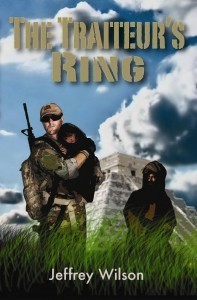 Support for the Navy SEALs
Support for the Navy SEALsIn August of 2011, the Navy SEAL community suffered its worst single day loss of life in its more than 50-year history when a team of SEALs aboard a special operations helicopter was shot down in Afghanistan. Like everyone with ties to the Naval Special Warfare, writer Jeffrey Wilson was deeply affected by this event. Everyone in the community is connected in some way to the families devastated by this tragedy.
Together with JournalStone Publisher Christopher C. Payne, Jeffrey has set out to raise money for the Navy SEAL Foundation, a non-profit organization that provides direct support for wounded SEALs and others from the Special Warfare community, and provides support and comfort for the families left behind when SEALs are killed in the line of duty.
For the entire month of February, Jeffrey Wilson will donate 100% of his royalties from his novel THE TRAITEUR'S RING to the Navy SEAL foundation. In an incredible show of generosity and support, Chris Payne at JournalStone has agreed to not only match this donation, but in fact donate 100% of JournalStones' February profits from this book during February.
Jeffrey Wilson, a vascular and trauma surgeon, was deployed multiple times supporting the Navy SEALs as a combat surgeon. Although he left active duty in late 2007, he remains an active reserve member. Still assigned to the SEALs, Wilson runs a training program for SEAL medics.
In Wilson's novel, Americans confront terrorism; injured soldiers regain their health; sacrifice is rewarded; flashbacks and terrifying childhood memories serve the greater good; ancient (and infallible) wisdom is available to true seekers; and emotional connection binds people together for an eternity. Wilson is currently available for interviews. His publisher, Chris Payne, is also granting interviews. Please let me know if you'd like additional information. Thank you for your time and consideration.
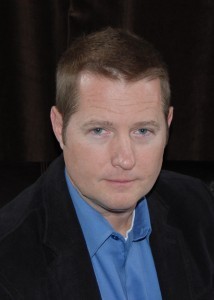 Author Bio: Jeffrey Wilson
Author Bio: Jeffrey WilsonJeffrey Wilson, the son of a U.S. Air Force fighter pilot who later joined Pan Am as a pilot, spent much of his childhood in Berlin, Germany at the height of the Cold War (1970 – 1975). He has worked as a musician (fife and drum corp) and actor; a firefighter/paramedic; and pilot and flight instructor. That was before he completed his residency in general Surgery and rejoined the Navy. He was a featured physician while the chief resident on trauma in an episode of "Trauma: Life and Death in the ER" on The Learning Channel during this time.
Wilson did a Fellowship in Vascular Surgery at USF from 2002-2004. He reported for duty as a Vascular Surgeon to Portsmouth Naval Medical Center in July 2004. There he was the Director of Vascular Surgery research and director of the Non-invasive vascular Lab. In January 2005, he deployed as a Combat surgeon assigned to a FRSS team (the so-called "Devil Docs" who set up battle field surgical support with the Marines). They were in the Al Anbar province of Iraq for 6 months.
Upon his return, he was recruited by Naval Special Warfare to provide surgical support as a combat surgeon with the Navy SEALs. He left active duty in Late 2007 but remains in the reserves, still assigned to the SEALs where he runs a training program for SEAL medics. He works as a Vascular Surgeon at the VA and as a Trauma Surgeon at Tampa General Hospital with the University of South Florida.
THE TRAITEUR'S RING is his first published novel, and is part of a three-book contract with his publisher. THE DONORS is due out next summer and FADE TO BLACK the following year. He is currently working on his fourth book.
Publisher Bio: Christopher C. Payne
Christopher C. Payne was born in DeSoto, Ill., in January 1967. He received his bachelor's degree in finance from Southern Illinois University at Carbondale, graduating in 1990. Currently he lives in San Francisco, Calif. In his spare time, he enjoys biking and snowboarding with his wife and two daughters.
Holding down a corporate accounting/finance job, Payne embarked on a literary career, delving into the world of writing with no preconceived idea of what to expect. He wrote three novels and edited an anthology before realizing his calling was more in tune with publishing.
JournalStone was established in 2009, became a publishing company in late 2010 and published its first novel in the spring of 2011. Publishing over 10 novels in 2011 was quite an accomplishment for a budding small press but 2012 holds the promise of some enormous potential for JournalStone Publishing.
Link to purchase the book on Amazon:
Book Information:
The Traiteur's Ring
By Jeffrey Wilson, M.D.
JournalStone
ISBN: 978-1936564170
Contact Information:
Stacey J. Miller, Publicist
S. J. Miller Communications
Randolph, MA
telephone: 781-986-0732


January 19, 2012
90 Minutes to Live – Interview – Brad Carpenter by Brett J. Talley
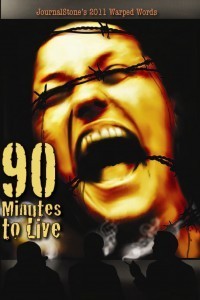 90 Minutes to Live is an anthology dedicated to Rocky Wood. Rocky, the current president of the HWA, was diagnosed with ALS and the proceeds from this book will be donated to help him purchase much needed medical equipment. If you are interested in purchasing the book please follow this link to Amazon and know you will be supporting a great cause.
90 Minutes to Live is an anthology dedicated to Rocky Wood. Rocky, the current president of the HWA, was diagnosed with ALS and the proceeds from this book will be donated to help him purchase much needed medical equipment. If you are interested in purchasing the book please follow this link to Amazon and know you will be supporting a great cause.
Brad Carpenter wrote, Godforsaken, one of the short stories included in 90 Minutes to Live and Brett J. Talley, author of That Which Should Not Be was kind enough to conduct the interview.
So sit back, relax and get to know what makes Brad Carpenter tick and how he came about writing horror.
Brett: Tell us a little bit about yourself. Where are you from? What do you do for a living when you aren't writing?
Brad: I was born and raised in Knoxville, TN. However, I recently moved to Los Angeles. I live with my wife, Melissa, and my daughter, Paisley, and our crazy Weimaraner named Penny. Unfortunately, I am still serving tables and slinging drinks at the Cheesecake Factory. It is a good job, but damn…. I wish I could write all day long.
Brett: What made you decide to submit your story, Godforsaken, to the 90 Minutes to Live Anthology?
Brad: Well, I met Chris Payne (President of JournalStone) at the Horror Writer's Association Conference last June. We became friends and he encouraged me to submit a short story. I did and got second place. Bo-ya!
Brett: Godforsaken is probably the most disturbing story in the entire anthology. In fact, it was so disturbing, the editors decided to use a scene from the story for the cover art. How did you feel about that?
Brad: Delighted! I was on a mission to disturb and I believe I succeeded!
Brett: Godforsaken makes me think of a movie version of the most disturbing aspects of Dante's Inferno. What was your inspiration?
Brad: The Divine Comedy is an obsession of mine. Everything I write ends up having some aspect of Dante in it. "Godforsaken," stole massive amounts of Dante because half of it is set in hell, or in a hell-esque environment. The theme was 90 minutes to live… so I thought, what is something that's 90 minutes long? And then it hit me… most films are that long. What if I could put people into a film, where they had the entire length of the movie to escape. If not…. well you know. And then, it turned into what if the devil came to earth and made a movie, what would it look like? I'd be a Grindhouse film. Wow, can you imagine the mind-blowing special effects!?!
Brett: One of the problems with writing horror is people look at you funny when they read some of the stuff you write. Has your story "Godforsaken" had that result with anyone?
Brad: Constantly. No one in my family will read anything I write. My wife does, but that's about it. Especially not my parents. They raised me up to be a hardcore Baptist, so this kind of thing makes them terribly uncomfortable.
Sometimes it comes up at work that I write. Their eyes light up and they ask, "Oh really, what do you write?" When I say horror I see their interest suddenly wan. However, I have a suspicious feeling that it wouldn't matter what genre I said, unless I wrote about teen vampires. Then, they'd be interested.
Brett: You obviously have quite a talent for short stories. What is your favorite short story? Do you have a favorite from 90 Minutes to Live?
Brad: Wow thanks for saying so, very nice of you. You're making me blush. My favorite short story I've ever read is "Shoggoth's Old Peculiar" by Neil Gaiman. As for the anthology, I'd have to say my favorite is "Acapulco Blue," but each one is great.
Brett: What author has inspired your writing the most?
Brad: Well we've already covered how much I love Dante. But I'm also inspired by: Michael Chabbon, Dan Simmons, George RR Martin, Jesse Bullington, Neil Gaiman, Peter Straub, Douglas Clegg, and of course the big three of horror: Poe, Matheson, and King.
Brett: What does your writing process involve?
Brad: Very extensive notes. I have writer friends who hardly ever use notes, they just wing it. Hell no. Not me. Plan, plan, plan. Even after so much planning, I write myself into walls all the time. So, once I get stuck… I plan again and get unstuck. Then, eventually I'm at the end of the novel.
Brett: What is it about horror that attracts you?
Brad: Genre fiction attracts me. Be it fantasy, sci-fi, or horror. I love going to worlds unseen. I love putting normal, everyday characters into "x-files-type" situations, love to see how they react, how they cope.
Brett: Obviously the electronic book is on the rise. What do you think about that? Greatest thing ever? Or creeping Communist subversion?
Brad: Hahaha, somewhere in-between great and communistic. This makes me think of Stalin holding a Kindle or a Nook and reading The Girl with the Dragon Tattoo.
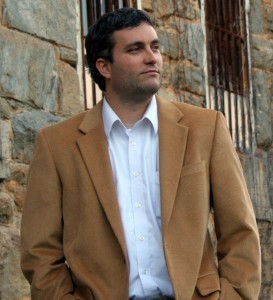 Brett: Now that self-publishing has become easier and less expensive, a lot of writers who might never have had their work see the light of day can be published. How do you think authors can separate themselves from the pack, and what advice do you have for readers who are trying to sift the good from the bad now that some of the gatekeepers are gone?
Brett: Now that self-publishing has become easier and less expensive, a lot of writers who might never have had their work see the light of day can be published. How do you think authors can separate themselves from the pack, and what advice do you have for readers who are trying to sift the good from the bad now that some of the gatekeepers are gone?
Brad: It is all about networking. If someone has a self-published book, one can almost judge the quality of content by how much time the author has spent trying to pedal their work, and by all the buzz it generates.
Brett: What book is next on your list to read?
Brad: Well I'm reading The Magician King, by Lev Grossman right now. After that…. uh…. dunno. Perhaps The Prague Cemetery by Umbeto Ecco, Or Bernard Cornwalls got a new book coming out, maybe that. Or maybe I'll finally get around to reading that Jo Nesbo series people have been talking about. Only time will tell.
Brett: If you could give one piece of advice to new writers, what would it be?
Brad: Read. Socialize. The latter is sometimes hard, but it is a must.
Brett: What is your next big project?
Brad: Writing a novel called Hangman's Highway.
Brett: Where can we follow you and your career on the web?
Brad: Happydagger.net


January 9, 2012
90 Minutes to Live – Interview – Bruce Golden by Brett J. Talley
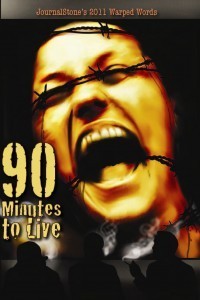 90 Minutes to Live is an anthology dedicated to Rocky Wood. Rocky, the current president of the HWA, was diagnosed with ALS and the proceeds from this book will be donated to help him purchase much needed medical equipment. If you are interested in purchasing the book please follow this link to Amazon and know you will be supporting a great cause.
90 Minutes to Live is an anthology dedicated to Rocky Wood. Rocky, the current president of the HWA, was diagnosed with ALS and the proceeds from this book will be donated to help him purchase much needed medical equipment. If you are interested in purchasing the book please follow this link to Amazon and know you will be supporting a great cause.
Bruce Golden wrote, Acapulco Blue, one of the short stories included in 90 Minutes to Live and Brett J. Talley, author of That Which Should Not Be was kind enough to conduct the interview.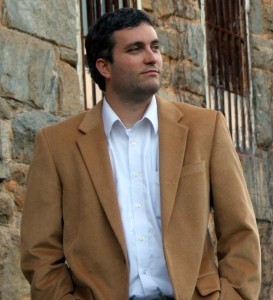
So sit back, relax and get to know what makes Bruce Golden tick and how he came about writing horror.
Brett: Tell us a little bit about yourself. Where are you from? What do you do for a living when you aren't writing?
Bruce: I was born, raised, and still live in San Diego. Even though I decided I wanted to write fiction as a teenager, for most of my life I made a living as a magazine editor/writer, a radio editor/reporter, and a TV news producer. These days, all I do is write fiction–a "starving artist" as it were.
Brett: What made you decide to submit your story, Acapulco Blue, to the 90 Minutes to Live anthology?
Bruce: It seemed to have all the elements the editors were looking for.
Brett: Acapulco Blue is one of the science fiction entries in the anthology. Do you write primarily in the Sci-Fi genre, or were you just looking to branch out?
Bruce: All of my fiction to-date is of the speculative variety. My novels are all science fiction, but my short stories are both scifi and fantasy. Many of my stories have been described as "Twilight Zone" types of tales–which I take as a compliment.
Brett: Acapulco Blue is as much about a car—a classic Ford Mustang—as the characters who drive it. What was your inspiration for the car?
Bruce: Actually, the car in the story is based on the first car I ever owned–a 1965 Mustang which I had painted in a color designated as "Acapulco Blue." Though I had to sell that car when I was drafted into the Army, I drive another '65 Mustang today. I've owned it for 25 years–though it's red, not blue. Friends say I'll be buried in it.
Brett: One of my favorite parts of the story was the invention of futuristic slang that the young people use. How'd you come up with that?
Bruce: I've always loved playing with dialects and creating my own words or phrases. When you write about the future, or about fictional societies, you get to do that. My favorite creation of that type was in my novel Better Than Chocolate. But you'll have to read the book to find out what exactly "pow-whammy" means.
Brett: How is writing a short story different than writing a novel?
Bruce: A short story normally only plays with a single idea, one or two main characters, and I can usually write the first draft in a day or two. A novel, for me, is a product of various ideas pieced together–many of which may have been in my drawer for years. My novels have all had numerous characters–from walk-ons to those whose viewpoints carry the narrative. I make it a point to hone the characterizations of even minor characters. And though a short story can occasionally call for some research, a novel can takes weeks of research to ensure accuracy. And, of course, the biggest difference is the time it takes to write. Barring any outside interruptions that life can throw at you, it takes me about six months to write the first draft of a novel. Then I have several categories of re-writing that take at least a few months.
Brett: Who is your favorite author? Favorite book?
Bruce: I grew up reading Edgar Allan Poe, Robert E. Howard and Mark Twain, but Robert Heinlein was always my favorite. Stranger in a Strange Land was my favorite book. Years later I grew to love the Dune series. These days I don't have a favorite, but I like Greg Bear, David Brin, and writers of that ilk.
Brett: What's the most disappointing book you have ever read?
Bruce: (can't think of one offhand)
Brett: What does your writing process involve?
Bruce: I outline pretty thoroughly and then push through on the first draft, just letting the words flow out, knowing I can go back and "fix it up" during the rewriting process. But just because I outline doesn't mean that sometimes the story takes off on its own tangent.
Brett: What is it about science fiction that attracts you? Why not write books about ponies?
Bruce: I've always been fascinated with the idea of other worlds–unique societies–and I guess I enjoy the chance to create my own. Science fiction is also a good way to comment, indirectly, on our own societies, and on humanity.
Brett: Obviously the electronic book is on the rise. What do you think about that?
Bruce: Greatest thing ever? Or creeping Communist subversion? I like the idea of a book I can hold in my hand, and I like the idea of copies of my books on library shelves. But I understand, if for no other reason than economics, e-books are the wave of the future.
Brett: What are your opinions on self-publishing vs. the more traditional publishing route?
Bruce: Every writer wants a major publishing house to publish their book, and, barring that, a smaller publisher. However, technology has made self-publishing a more viable option for those who get ignored.
Brett: What book is next on your list to read?
Bruce: Actually, I'm going to read the other stories in 90 Minutes to Live.
Brett: If you could give one piece of advice to new writers, what would it be?
Bruce: Write in the genre that you love to read, and read as much as you can in that genre. And just keep trying. When I started out trying to sell magazine articles, it took me more than four years before I got my first sale. Many of my short stories, including Acapulco Blue took years to find an editor who appreciated it. If you want to do it, you just have to keep on keepin' on.
Brett: What is your next big project?
Bruce: I'm in the final rewrite process of my fourth novel Red Sky, Blue Moon. Its speculative ingredient: What if alien beings visited Earth long ago, and culled people from dissimilar cultures and transplanted them to another world? How would their various cultures develop?
Brett: Where can we follow you and your career on the web?
Bruce: My website is http://goldentales.tripod.com/ and you can find links to my books there. Occasionally I'll tweet a twitter @goldenmissive or you can just Google my name and find my latest work online somewhere.





